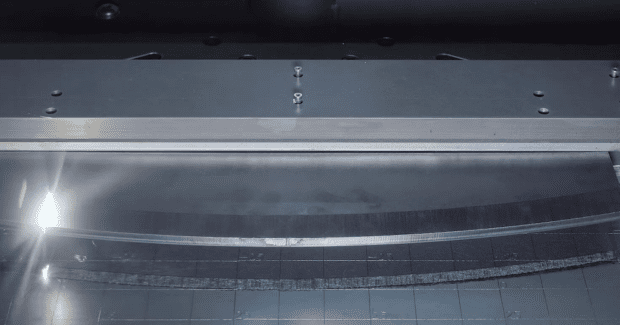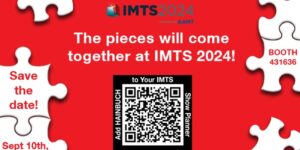Laser Texturing Applications in Metalworking
Surface texturing is crucial in several metalworking applications to ensure that parts meet quality requirements.
Posted: December 30, 2021
Reducing friction is especially important for elements that are designed for rolling or sliding.
Without texturing, defects are more likely to occur. This can lead to expensive recalls that hurt a company’s reputation.
Surface texturing can be expensive, and most metalworkers are looking for ways to maintain quality at a reduced cost. Rather than sandblast or chemical treatments, laser texturing is a viable alternative that not only reduces costs, but also speeds up the process and provides precision texturing.
THE BENEFITS OF LASER TEXTURING APPLICATIONS IN METALWORKING
Laser texturing has many benefits for manufacturers. 3D computer modeling allows designers to map the texture and align it with nearly any shape. Lasers also precisely track the surface topology, including undercuts or areas that are in or out of the line of sight. This creates a reliable, consistent, and repeatable texturing process to get optimal results every time.
Benefits include:
- A significant reduction in waste
- No chemical reagents necessary
- More control over surface microstructures
- Reduced environmental impact
- Ability to texture spaces difficult to reach
- Significantly reduced labor and production time
- More cost-efficient than other methods
There is also increased texturing precision compared to other methods. For example, acid etching can result in variances in depth from the chemicals involved. This can result in a less uniform result.
WHAT IS LASER TEXTURING?
Laser texturing is a new way of finishing surfaces in metalworking. It uses laser ablation to modify the surface texture and roughness, creating micropatterns into the metal surface. As a non-contact process, laser texturing can improve properties like adherence, wettability, electrical conductivity, thermal conductivity, and surface friction.
It can be used to prepare surfaces for thermal spray coating, laser cladding, mechanical seals, and other processes.
LASER TEXTURING ON MOLDS
Laser texturing is quickly replacing other finishing processes like sandblasting and chemical etching.
Take chemical etching. This traditional method takes a lot of prep time upfront, such as disassembling components or molds, cleaning residual oil, and manually determining texture limits. In most cases, the exterior of the product must be protected with tape or spray masking to hide areas that do not need to be textured. Sandblasting is also required to make sure the textured pattern has proper adhesion.
Then, the pattern is printed out and used as a template — usually a wax or film transfer — which is manually applied.
All of this happens before any chemicals are used.
It can take multiple printing jobs and treatments (especially if a mold is involved) to make sure the textures align properly. Then, once the acid etching process is finished, the parts are sandblasted again to clean off residues. After cleaning, they must be inspected for damage or stains.
This method requires several manual steps. Even simple pattern applications can take multiple days. More complex patterns might take weeks.
With laser texturing, most molds and complex parts need minimal cleaning and prep work, and they do not need to be disassembled. No taping or sandblasting is required either. Once the parts are mapped and laid out with 3D computer modeling, they’re ready for laser texturing.
Unlike other methods, laser texturing is a digital process that reduces the labor needed to produce finished parts. It also removes surface contaminants as part of the process, leaving a texture that meets specifications for surface properties. Since it provides flexibility in depth and texture, manufacturers can often produce multiple textures in one session.
Once modeling is complete, you get consistent texturing results no matter where the manufacturing takes place. Whether it’s in the US, China, Europe, or anywhere in the world, the texturing will be identical. The laser ablation creates a smooth and flawless texture which is crucial in cases where parts or mold are assembled next to each other.
LASER TEXTURING DIRECTLY ON PARTS
Laser texturing is important to prepare metal surfaces for other manufacturing processes while significantly reducing manufacturing time, complexity, and cost.
Some of the applications include:
- Texturing before adhesive bonding
- Texturing of mechanical seals
- Texturing before coatings or thermal spray coatings
- Texturing before laser cladding
LASER TEXTURING BEFORE ADHESIVE BONDING
When it comes to structural applications, increasing surface roughness is important to obtain reliable bonded joints. By generating patterns that improve adhesion, laser texturing improves the bonding performance. Even for complex bonded joints, laser texturing can increase the mechanical resistance of the load acting on the joints to reduce processing time and improve adhesion.
Since the process is stress-free for the metal, it doesn’t create microcracks or chemical changes that could negatively impact the strength of the bond.
LASER TEXTURING OF MECHANICAL SEALS
Laser texturing of mechanical seals helps seals retain lubricants, improves durability, and reduces friction.
Mechanical seals are particularly susceptible to heat. They are subjected to friction that can increase temperatures and cause faster wear. This is the case, for example, when sealing a rotating shaft. A network of dimples on one of the surfaces can help reduce friction by helping retain the lubricant film.
LASER TEXTURING BEFORE COATINGS OR THERMAL SPRAY COATINGS
Coating effectiveness is highly dependent on the preparation of the substrate. Conventional surface preparation methods, such as grit blasting, can leave behind a brittle surface and produce surface deformities leading to stress and potential cracks.
Laser texturing avoids these potential problems while increasing adhesion.
Laser texturing removes surface contaminants before coatings while generating the roughness required to assure proper adherence. It can also generate a corrosion-resistant oxide layer that prevents coatings from peeling off.
When preparing surfaces for thermal spray coating, laser texturing generates a texture that improves wettability. This enhances splat spreading to form a tighter bond between the substrate and the coating.
Compared to other methods, laser texturing allows ablation, fusion/vaporization, and substrate texturing in just one step.
LASER TEXTURING BEFORE LASER CLADDING
Laser cladding (also known as laser metal deposition) enhances the adhesion of the clad material to the surface, which improves its efficiency and wear resistance.
Using a hot or cold wire, or powder feedstock, laser cladding creates a metallurgically bonded layer that is tougher than what can be achieved using a thermal spray. The key to obtaining a tight bond is to use laser texturing to create intricate and precise geometrical features. These features help create the mechanical bond between the base material and subsequent layers.
REDUCE THE ENVIRONMENTAL IMPACT
Besides all these advantages, laser texturing also helps improve workplace safety. It eliminates chemical treatments and the need for personal protective equipment. Laser texturing also aligns with the greening of the manufacturing industry by utilizing fewer resources and generating less waste.
At the same time, manufacturing using laser texturing is drastically reducing operating costs and improving up their production processing times.




